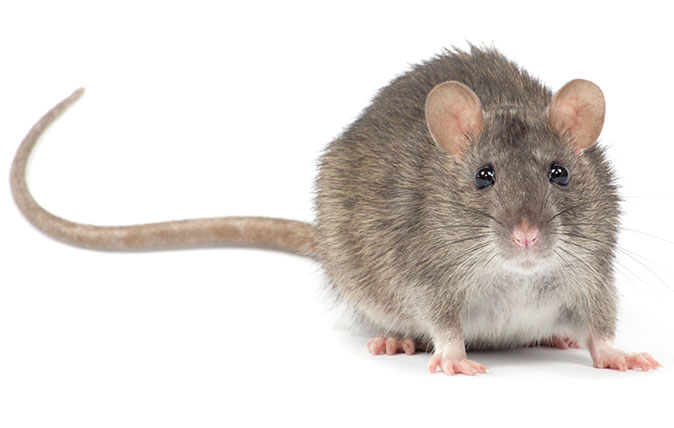Curious questions: Are you really never more than six feet away from a rat?
It's an oft-repeated truisim about rats, but is there any truth in it? Martin Fone, author of 'Fifty Curious Questions', investigates.


Having spent most of my working life in the city of London, I can well believe it, but if we are talking about Rattus norvegicus, I have never been convinced. I can count the number of times I have seen a real live rat on my fingers and toes and perhaps have one or two left over.
What I do know is that they are no respecter of surroundings. I have seen one in a so-called luxury hotel, scuttling across the bar area, to the consternation of some and the amusement of the other guests. I’ve seen others, as you might expect, rummaging around rubbish piles. Normally, they are shy creatures and go out of their way to avoid humans.
It is difficult to know how this canard has come about. One finger of suspicion has been pointed at W R Boetler, who, in his 1909 blockbuster, The Rat Problem, tried to establish whether it was reasonable to suppose that there was one rat for every acre of cultivated land in the UK. He was reduced to making an educated guess. As there were forty million acres of farmland at the time and a UK population of forty million, the conclusion that there was one rat for every one of us was too tempting to resist.
Let’s look at the problem another way. If we assume that a rat has a circular area to itself, then in order for it to never be more than six feet away from where we happen to be, the circular area it will occupy will be some 11.49 square metres. The UK occupies some 245 billion square metres, so for rats to be evenly distributed in their 11.49 square metre areas, there would have to be some 21.3 billion of them. This seems highly unlikely.

Fortunately, Dr Dave Cowan of the Food and Environment Research Agency can provide us with some assistance. The first thing is to know something about rats. The particular nugget of wisdom that helps is that they are completely commensal here in Blighty. In other words, they have a symbiotic relationship with humans.
There are four places where rats may be found: in and around our houses, in commercial premises, down sewers, and on agricultural premises. We can now do the maths.
It is rare for rats to live in our houses – around 0.5 per cent are infested – but they are more common outside in gardens, compost heaps, and outbuildings. Even so, only three per cent of premises have a problem with rats, and where they are, there are relatively few of them.
Exquisite houses, the beauty of Nature, and how to get the most from your life, straight to your inbox.
Cowan calculated the number of domestic rats at around 1.5 million. Five per cent of the 1.8 million commercial premises have rats in residence, a measly total of around 200,000. There are around 16 thousand square kilometres of sewers in the UK, of which around 5 per cent have rats. In the 1950s, a survey was conducted into the number of rats in sewers, and a figure of 2,000 per square kilometre was arrived at.
This means that there are some 1.6 million down the sewers, making a total of around 3 to 3.5 million in urban environments.
If we move to the country, the picture is somewhat different. Around 40 per cent of the 200,000 agricultural premises in the UK have rats, and on average there are 90 rats on a farm. Multiplying it all gives us some 7 million rural rats and some 10.5 million rats overall.
The UK has around 16,000 square kilometres of urban space. So if all the urban rats were distributed evenly, each one would have 5,000 square metres to roam around.
The upshot of all this? If you were standing in any one spot in an urban environment, at worst you would be some 50 metres away from a rat.
Martin Fone is author of 'Fifty Curious Questions', from which this piece is an excerpt – find out more about his book or you can order a copy via Amazon.

How to get rid of rats
Getting rid of rats isn't easy: they're a notoriously destructive and stubborn breed, and require patience and determination to eradicate.

Credit: Caters
Dormice: Britain’s sleepiest, and most charming little creatures
David Profumo takes a look at the lovely little dormouse – a delightful little creature which spends 75 per cent

The worst garden pests of all? The ones you invite in with open arms
A couple of weeks ago, Alan Titchmarsh wrote a lovely piece for Country Life about how to get children and
After graduating in Classics from Trinity College Cambridge and a 38 year career in the financial services sector in the City of London, Martin Fone started blogging and writing on a freelance basis as he slipped into retirement. He has developed a fearless passion for investigating the quirks and oddities of life and discovering the answers to questions most of us never even think to ask. A voracious reader, a keen but distinctly amateur gardener, and a gin enthusiast, Martin lives with his wife in Surrey. He has written five books, the latest of which is More Curious Questions.
